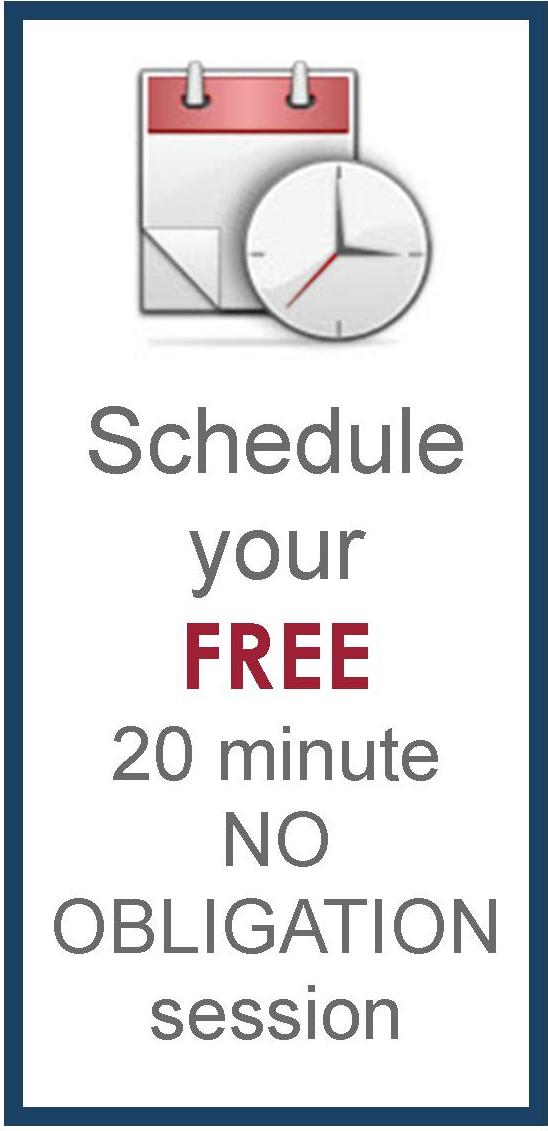It’s a marathon not a sprint – 9 tips
Table of Contents
- Slow down and breathe
- Pace Yourself
- Set Realistic Goals
- Establish a Sustainable Routine
- Build a Support System
- Embrace Flexibility
- Prioritize Reflection
- Celebrate Milestones
- Cultivate Resilience
Introduction

“There is no way out but through” from A Servant to the Servants by Robert Frost
Robert Frost’s poem, “A Servant to the Servants,” is told from the point of view of a female cook washing dishes while talking to a listener. Toward the end of the piece, she remarks, “There’s work enough to do–there’s always that…” Whatever you may be doing, there is always more work to do! In higher education, there are classes to prepare, administrative reports to compile, students to help, budgets to write, policies to create or alter as needs change, or new standards to be met. I know, I’ve lived in this environment myself and felt the weight of multiple simultaneous requests to handle.
Embarking on a new semester, whether you are a professor, student, administrator, or staff person, is a sprint, with many things demanding immediate attention. Preparing syllabi, adjusting class size, making sure the computer network is up and running with adequate bandwidth (users arrive these days with multiple electronic devices, not just one laptop to connect), helping new staff or new professors settle in, and so many other particulars that require sprinting to meet short-term deadlines. If you keep up this pace, you will quickly be exhausted.
As we enter the month of February celebrating love, show yourself some self-compassion and love.
Below are 9 ways to treat life in higher education as a marathon not a sprint
1. Slow down and breathe
It’s essential to take a break and breathe once the initial sprint has passed. Start looking at your education work as a marathon to be run rather than a sprint. No one runs a marathon without a lot of advance preparation. You’ve already got the foundational skills based on your own education to adopt a more strategic long-term approach. Doing so can help maintain your energy and enthusiasm for the work, ensuring your own well-being and helping those around you breathe into the long-term perspective.
Last month, I wrote about how a 10-year time horizon can help make time feel more spacious. Viewing work as a marathon is another way to feel less overwhelmed in the moment. There is always more work, and you cannot create more time. What you can do is adjust your attitude and figure out what you can accomplish in the time you have available. In addition to the daily work you do, you may feel compelled to participate in what is loosely termed “social justice” work. In my community, issues of censorship have begun to surface, along with extensive changes to curricula with long-term consequences for education. To fight unwanted changes takes an amazing amount of time and energy. It’s certainly soaked up some of my available time.
2. Pace Yourself
Just like in a marathon, pacing is key. Instead of overwhelming yourself and everyone else with an intense workload at the beginning of the semester, consider spreading out the material more evenly. This allows for better retention, understanding, and reduced stress for both you and your students. Think quality over quantity.
Remind yourself that most people need a full year in a job to understand the rhythm of the work. You may need to teach the same basic material at least three times before it feels natural; you may have to go through a couple of budget cycles to feel comfortable running various economic scenarios.
3. Set Realistic Goals
A marathon runner doesn’t start the race at a full sprint; teachers should set realistic goals for themselves and their students. The secret to any large project or endeavor is to break down larger objectives into manageable tasks and then prioritize them based on importance. This approach helps prevent burnout and allows for steady progress. If you are writing as well as serving on committees, teaching, handling administration (or even administrivia), cut yourself some slack. We tend to believe everyone else is more productive than we are. You are (probably) not writing any slower than anyone else.
Have you gotten stuck in your writing? Stop saying, “I’ll finish that [chapter, project, report] on Friday when I have time.” You will never have big blocks of open time. Modern life does not lend itself to that, and there are far too many ways people can reach and interrupt you. Build a little bit of time to write into each day, and you have a better shot at winning the race with a better final product and probably better health, too. It also helps to remember that writing takes all kinds of forms depending on what you do: you may need to write to grant specifications, evaluation requirements, memos to directors or chairs, or reports to government agencies. Depending on what your role is at an institution, you may be writing to actual clients. It all takes time. Remember, the slow and steady tortoise beat the hare in a race to the finish.
4. Establish a Sustainable Routine
You want to work as much as possible at a consistent and sustainable pace. Think about your marathon run versus your sprint as a kind of sine wave for your life. There will be times when you must push hard to meet a deadline at the top of the curve and times when you can relax into the trough of less immediate demands. The deadlines may be professional, like launching a new learning module, or personal, like planning a wedding or getting a child ready to leave for college. Establish a basic routine to balance your work and personal life by setting specific work hours with regular breaks.
Prioritizing self-care will help build a life for endurance, not burnout. Speaking from personal experience, when I have failed to give myself enough time to sleep, exercise, eat right, and engage in my own spiritual practices, the universe has come along and knocked me upside the head. “Burnt out and exhausted?” says the universe, “I’ll show you. You’re going to get really sick and be forced to rest now.” I’ve also seen many people try to push themselves at the end of a semester by saying, “I’ll use my break time to…” only to get sick on the first day they take a break. Your body will protect you even when your mind wants to push through. Regular, sustainable routines can keep you from falling into the “I stopped, and now I’m sick” trap.
5. Build a Support System
Marathon runners often have a team supporting them and a community cheering them on. You want to identify the people or groups that can help you do your work. Collaborate with colleagues, share resources, and seek advice when needed. Establishing a network of support can help alleviate stress and provide valuable insights. If your budget allows, you may even want to bring in some outside help, whether for teaching and staff development or getting executive coaching for university leaders. Students and staff can also be part of your support system. Extra eyes and minds may open a new point of view for you or give you an alternative way to meet a deadline.
I recently had to prepare a bunch of material for placement in a state archive. The librarian asked that all copies be paper for archival purposes. I dreaded pulling the material together and spending time running electronic documents off my own personal printer. When I ran this by a colleague, she immediately said, “Organize the material in one big electronic file and send it out for printing.” The cost was significantly less than expected, not to mention the wear and tear on my printer and my mental health. Another set of eyes helped avert me from engaging in a tedious project that would have driven me insane.
6. Embrace Flexibility
Marathon runners adapt to changing weather conditions or unexpected obstacles. You need to be open to adjusting plans based on student or peer needs, unexpected events, or changes in available resources. Adjustments may be needed based on student feedback, emerging trends like the use of artificial intelligence, or external factors that may impact the learning environment, such as the latest campus unrest due to conflicts in other parts of the world. Advanced research on potential strategies with plans for overcoming obstacles can help reduce stress when flexibility is needed.
In the Lowcountry of South Carolina, where I live, flooding is a perennial problem. Over the past decade, flooding has gotten significantly worse, between real estate development and rising seas on the coast. If I need to go downtown in bad weather, I know which are the “high spine” roads I can use to get around when the rest of the town is flooding. I have a plan for hurricane strikes, as does everyone else I know. It includes getting in food and water, decision points for when to evacuate, which physical items, such as a safety deposit box, will be loaded into a vehicle if leaving becomes necessary, and a plan for data retention. The last one used to be a much bigger issue, but backing up material into the cloud certainly makes that easier. The ability to adapt builds strength for hard times.
7. Prioritize Reflection
Analyze your performance to identify areas for improvement. Marathon runners look at all kinds of data: what did it take to win, how long did the race take, where were rest stops or water needed, what pace was used, was it possible to preview the race in advance, was a previous record beaten (by me or someone else). Similarly, educators should prioritize reflection on their practices. Think about what additional feedback would help improve processes or relationships.
Regularly assess what worked well, what needs adjustment, and how you can enhance your teaching methods. If someone else helped you along the way by cheering you on, handing you water, or palming your hands as you passed by, make sure you acknowledge or thank them in some way. Saying thank you goes a long way to create civility when difficult reflective questions need answering. Continuous reflection aimed at improvement contributes to professional growth and improved outcomes. Just remember: you don’t have to make every change proposed or do it all at once.
8. Celebrate Milestones
Milestones should be celebrated. A standard marathon is slightly over 26 miles. If you are the runner, how far did you go? If you had to quit at mile 16, you still managed to run 61% of the race. That’s pretty good. If you keep training, you’ll probably do better next time. Similarly, if you headed up a project like getting a new building on campus, you may not have been able to finish in the time frame you expected due to things out of your control, like supply chain issues.
Plenty of people got stymied during the pandemic when lumber became in short supply as everyone started home improvement projects while locked down. If you got the footers poured, the project is underway. Doing the basic research for a publication is also foundational. Celebrate what you have been able to accomplish, both big and small. It’s those small manageable pieces that ultimately add up to getting across the finish line. Acknowledging successes fosters a positive atmosphere and reinforces your commitment to the educational journey.
9. Cultivate Resilience
For most people running a marathon is an extramural activity, so it should be both challenging and fun. If the training becomes too tedious or difficult, most people will let the activity go. If your work as an educator becomes too tedious or difficult, you may have to let that go. There are other ways to make a living that can be meaningful to you. To build mental and physical resilience and endure everyday challenges, you must own your why: Why do you stay in higher education? Are you in education work because you want to develop students’ capacity to think? Are you there because you love research and discovering new things? Do you love finding resources to build enduring programs of study or create an environment that allows other people to dive deep into their conceptual understanding of the world? Knowing your own purpose will help you stay positive in the face of setbacks.
Conclusion:
Although this post is aimed at making your work life feel more expansive, it’s always important to remember you are more than the work you do. In addition to the role you play as an educator, you have personal relationships that matter and personal projects you may want to complete, whether it’s knitting a blanket, riding a horse, or running an actual marathon. Allow yourself to model a more sustainable and fulfilling academic experience for everyone engaged in the work of higher education through pacing, realistic goals, community, flexibility, self-care, analysis, and feedback, and spread out your load for the long haul. With the right mindset and strategies, you can treat the work and the preparation you do as a long-term marathon, even when a few unavoidable sprints are interspersed. This can help you endure long term and celebrate the academic journey you are on.
If you are still struggling to run your marathon, contact Hilary for a 20-minute FREE consultation.
Tags: academia, academic, academic writing, attitude, be prepared, get organized, Getting Organized, goal setting, goals, happiness, happiness at work, planning, writing






Great post, Hillary! And relevant well beyond the world of academic work. I think all 9 points resonate for anyone who tends to sprint at life or tasks or projects, and get exhausted as a result. They’re certainly useful reminders for me.
Thank you, Kate. It certainly something I try to remind myself.